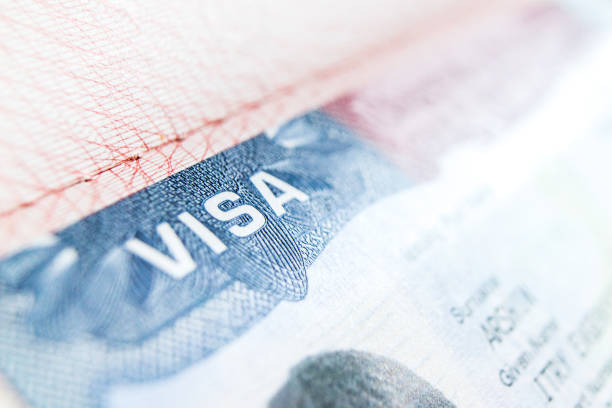Right Now
Key Differences Between Business Visas and Immigration Visas

Global mobility enables firms to easily deploy top people wherever to assist their global expansion ambitions. It became simple and quick to move personnel to different countries or hire local talent to drive new market development.
However, global mobility encompasses more than just fresh market access. It also enables businesses to provide employees more freedom to work overseas, which is a major desire among younger, high-potential individuals. In summary, global mobility drives both business success and individual development. New technology and intelligent infrastructure can aid by enhancing, simplifying, and executing the road to immigration, tax, and work permit compliance. This provides a competitive edge in both speed-to-market and talent recruiting.
Business and work visas allow businesses and individuals to seek more opportunities abroad. A variety of criteria influence the ultimate choice of the appropriate immigration method for each country. Let’s explore the differences between both.
Business Visas
As the name implies, business visas are primarily meant for persons visiting a nation to do business with other enterprises and individuals residing there. Depending on the destination country, the visa might be electronic or paper, single-entry or multiple-entry, and range in length from a few days to many months. It is crucial to remember, however, that a business visa is virtually never meant to be used as a work or residence permission. The bearer of a business visa is not permitted to participate in regular jobs, employment, or activities that might create a more permanent residency in the nation.
Work Visas
Work visas, sometimes known as employment visas, are designed for longer-term work/employment and residency in a nation. Work permits differ in form from nation to country. A work or employment visa in one nation may just allow you to enter the country with the intention of working, but you must also get a work or employment permit in order to work there. In another nation, a work or employment visa may combine entrance permission, work authorization, and residency permit into one document. In many other nations, the term "work visa" may refer to a combination of a work permit, an entrance visa, and a residency permit.
Regardless of the terminology, in almost every country, the work visa/permit process will be more difficult, expensive, and time-consuming than the business visa process. Companies obviously desire to use business visas wherever feasible. However, avoid the temptation and error of attempting to "fit the round peg into the square hole" by utilizing a business visa for what is essentially a labor assignment (as this author did prior to corporate immigration). Individuals and businesses discovered to be "working" on a business visa may face severe consequences in many countries, including fines, denial of future visas and permits, and jail.
Where Is the Line Between Both?
With immigration processes that differ greatly from nation to country, identifying whether a work visa is necessary vs when a business visa would serve can be difficult. Immigration rules might be confusing or non-existent. When a planned action involves a potential gray area, it is usually advisable to contact an experienced specialist in that country's immigration system. However, mobility managers may rely on broad principles for advice in most cases.
The notions of pay and operations are commonly used to distinguish between business and work activities. Paying great attention to these two elements will generally direct mobility managers to the appropriate immigration path.
The visa holder's remuneration is frequently the primary factor in determining the appropriate visa. In virtually all circumstances (with the exception of reimbursement for certain expenditures such as travel and housing), if the individual is compensated for his or her services by an in-country firm, a business visa is ineffective and a work visa/permit is necessary. However, this alone is insufficient. An individual who is paid completely by an outside employer may nonetheless be considered to be "working" within the country.
This is where the operations element comes in. In most countries, if the individual is actively participating in the continuing business activities of a firm situated in the country, he or she is considered to be "working". As a result, a business visa is not appropriate, and a work visa is necessary. However, judging when passive tasks become "active involvement" in corporate processes is undoubtedly an art rather than a science.
Here is a list of popular activities and the visas under which they are normally permissible.
Under a business visa, permitted activities include attending meetings, seminars, conferences, trade shows, and sporting or cultural events. However, speaking or presenting at a meeting, seminar, or conference may not be permitted if the speaker/presenter is paid more than expenses. Similarly, professional athletes, artists, and entertainers may be barred from obtaining salary or other forms of remuneration in addition to prize money or accolades;
Selling or buying goods and services on a restricted scale;
Investing and studying investments;
Prospecting, investigating, studying, and "fact-finding" for potential business prospects;
Internal auditing of corporate records;
Contract discussion and completion;
Expert advice, supervision, observation, or monitoring for ongoing undertakings;
Participation in a lawsuit or arbitration;
Visits, tours, and inspections of corporate and client locations, branches, and partner firms.
Work visas (or employment permits) are often required for the following activities:
Traditional employment;
Self-employment;
Any "hands-on" experience with company operations. This can range from actual engagement in processes like manufacturing or production to direct administration or supervision of people;
If an activity does not clearly fall within the category of allowed activities under a business visa, apply for a work visa.
“Grey Areas”
"Grey areas" are places where jurisdictions may dispute whether a work or business visa is appropriate. In these cases, a fact-specific professional assessment by your global immigration service is usually recommended:
Providing services may be permissible on a business visa if it is in connection with the sale, purchase, supply, installation, or repair of equipment or products, and the service is secondary to the equipment or product, such as when a foreign company sends a technician to install a sophisticated piece of equipment purchased by a local manufacturer. However, in other locations, a work visa or permit is required.
Employee training, whether the applicant is the recipient or supplier, may be acceptable on a business visa provided it is brief and more passive in character than "on-the-job" training. However, the longer the training lasts and the more "hands-on" it is, the more probable authorities may need a work visa or permission.
It’s important to note that the above is an attempt to provide "bright-line guidance" in an area that is primarily murky. A professional immigration lawyer and country-specific guidance remain indispensable.
Work Permits and Business Visas in the United States
The Department of State grants visas for admission into the United States. The B-1 visa for Business Visitors permits persons to go to the United States for brief periods of time to do business, such as meetings and conferences.
Foreign nationals wishing to work in the United States, on the other hand, can apply for a variety of temporary work visas. Each work visa eligibility criteria varies depending on the type of work being done. With legal assistance, it will be easier for you to navigate them, get your paperwork properly, and avoid possible problems.
More Posts



















Map
Amelia Grant
Get DirectionsAmelia Grant
-
31-57 37th St
Long Island City, New York 11103
United States - 6462709836
Report This Post
Please complete the following requested information to flag this post and report abuse, or offensive content. Your report will be reviewed within 24 hours. We will take appropriate action as described in Findit terms of use.


